The four-star Sarykum Business Hotel & Spa, Makhachkala looked good and rated well on-line. But when we got there it felt like it was in the middle of nowhere. And it was. Located in a vast flat semi-arid plain, the hotel is actually not far from the famous Sarykum Sand Dune. But not much else... As we laughed to ourselves, "it sure ain't no downtown Makhachkala", the nearest city (an hour's drive away) and where we expected to stay for the night.
We had arrived the evening before from Derbent to what appeared to be an empty, gated hotel behemoth. And whilst waiting at the lonely reception desk in the empty foyer, the establishment for all intents and purposes looked like it had never seen any guests. It was I thought, just a bit reminiscent of what I imagined of the legendary Hotel California. But unlike the lyrics of the song, we could not even check in let alone "Check out any time you like. But you can never leave....".
After twenty minutes or so Abdullah hunted around for signs of life, and finally a somewhat hassled looking woman appeared and checked us in. To our surprise, our room was quite lovely. Large and well furnished, it looked out onto some isolated fields housing some horses, a number of which were roaming up and down the main road.
Other than a distant glass factory, there was nothing else in sight. It was all quite bizarre. Who comes here, we wondered? After all, the hotel was built on a grand scale and someone had invested a heap of money in the place.
When we made our way to the restaurant for dinner, it appeared to be closed. But like the reception, after half an hour or so the chef and some staff turned up, the lights were turned on and the restaurant opened for business. Sometime later two other guests turned up. But from what we could see, that was the extent of the clientele. Our meal was very good and we enjoyed a pleasant evening.
We just couldn't help but think that the place was all a bit odd.... Unlike Hotel California however, we didn't dance in the gargantuan courtyard in sweet summer sweat, nor were we told "But you can never leave!".....
THE FASCINATING ECOSYSTEM OF SARYKUM SAND DUNE
About the Sand Dune
Our visits for the day were to the nearby Sarykum Sand Dune, followed by an afternoon of boating and fishing at Sulak Canyon. After Sulak, we would head for Grozny, Chechnya. I must confess we were both a bit nonplussed (in the modern sense of the word) about seeing a sand dune. And while the canyon sounded interesting, Alan who detests boats*, was not looking forward to an afternoon on the water. He hates fishing too... It was as you can imagine, a bit of a testy start to the day....
*Alan's intense dislike of boats is largely my fault. Some years ago I impulsively bought us a small outboard motor boat. And sadly "Marilyn" was a disaster from the very start to the very end. Amusing as it now is, it's yet another story....
Sarakum (meaning "yellow sands") Dune is in fact a particularly interesting natural phenomenon. The largest dune in Europe and the second largest in the world (largest being the Grand Erg Oriental in the African Sahara), it stands at a height of some 262 meters and together with several other smaller dunes, occupies an area of about forty square kilometers.
Like all dunes, its shape and height change according to wind factors but strangely the foot of the dune is thought to have remained stable for more than several thousand years.
The formation of such a grand sand dune in no sight of a beach or sandy desert is indeed a bizarre phenomenon. A fragment of Asian Desert, this enormous dune is in fact located on solid clay country on the edge of the Kumtorla Mountain ranges where the steppe** and mountains meet. Interestingly, its formation is thought to be the result of strong wind eroding sand fragments from nearby mountains and blasting them into the dune area.
**Steppe country is characterised by vast flat dry grassland plains.
With its extremes of temperatures and low rainfall, the ecology of Sarykum is unique. It is the hottest place in Dagestan with temperatures soaring to a staggering 60 degrees C, and winters dropping well below freezing point. Average annual rainfall is just 330 mm (13.2 inches); making it a very much borderline desert - semi arid environment (deserts receive less than 10 mm per year).
The diversity of wild life on Sarykum is quite spectacular and includes a wide variety of endemic species of flowers, plants and grasses as well as unique species of insects, reptiles, birds and other fauna.
Sarykum Dune is part of the Dagestan Nature Reserve or "zapovednik", meaning a strictly controlled formal Russian nature reserve. Dagestan Nature Reserve also incorporates the three federal wildlife reserves of Agrakhan coastal strip and home to several species of endangered migrating birds, Samur forests and Tlyarta, a mountainous area on the slopes of the Greater Caucasus near the Georgian border.
Sarykum Reserve - The Old Railway Station of Kum-Torkale
The surrounds of the Sarykum Sand Dune were almost as bizarre as the hotel. Driving along a flat, dry dusty road there were no people to be seen, nor seemingly any life at all. Marking the entrance to the dune reserve was a newish looking wooden museum/visitor centre and some wicker cabanas, surrounded by what looked like a small zoo with wire enclosures housing a number of dejected looking eagles. In front of the museum was a single railway line and a derelict old railway station. Not surprisingly, there was no-one staffing the grounds and the museum was locked.
After many years of travel and seemingly hundreds of tedious long marches through museums and cultural centres, we had made a special request to our travel agent to limit such visits as much as practical. Secretly pleased it was closed and not wanting to go near the zoo, Alan and I wandered around the grounds of the old railways station which looked far more interesting, while Abdullah upset that he had been given incorrect information, looked for the reserve staff.
The railway station was fascinating. According to local sources, the railway station and line was where Soviet Leader Joseph Stalin passed through on his journey to Iran where he met with US President Franklin D Roosevelt and British Prime Minister Winston Churchill at the famous Tehran Conference of 19431
Looking at the sadly crumbling railway station of Kum-Torkale, my imagination ran riot. Presumably in 1943, the tiny railway station would have been in much better order? And outside a charming sandstone building with lovely masonry and a pink plastered facade, there had perhaps been a number of local farmers - and even city people from Makhachkala - waiting in anticipation for Stalin's personal train?
I imagined the silent onlookers as the train sounded its horn as it passed by the humble little station. Stalin's mass deportations of ethnic groups during the almost ten years since the Great Purge1, would have well and truly chilled the spines of the Dagestan population. It was in fact, only a year later in 1944 that around half a million people from neighbouring Chechnya and Ingushetia were deported to Central Asia, mainly to Kazakhstan on the pretext that they had collaborated with Nazi German occupiers in the north-west of the republics.2
Deep in thought, I reflected on what it must have been like at the time for the ordinary Russian people in Dagestan.
In times of political turmoil, deportations, executions, the threat of total Nazi occupation3 of the North Caucasus and on the precipice of what would be known as The Great Patriotic War (World War II), I wondered whether the onlookers would have been experiencing terrible apprehensions of even worse events to come...? I shuddered.
As if on cue, a small freight locomotive towing four tanks of petroleum fuel sounded its horn as it slowed down and passed by the railway station. Abruptly shaken back to reality from my imaginary indulgence, I watched almost amused as the train driver gave us a friendly wave. Here is a video courtesy of Abdullah: https://youtu.be/s2cqAH4yghw
1 The brainchild of Joseph Stalin, the Tehran Conference was a strategy meeting to forge an accord with Allied Leaders US President Franklin D Roosevelt and UK Prime Minister Winston Churchill. A major outcome of was the development of an allied relationship and a commitment by the "Big Three" leaders to open up a second front against invading Nazi Germany.
2 Campana Aurelie, The Soviet Massive Deportations - A Chronology, Mass Violence and Resistance - Research Network, November 5, 2007
3 In July 1942, German troops captured Rostov-on-Don north of the Caucasus, opening the Caucasus region and the oil fields beyond at Maykop, Grozny, and ultimately Baku, Azerbaijan, to the Germans.
Footnote: I acknowledge there is debate about the leadership of Joseph Stalin. Was he best known as a great leader who transformed the Soviet Union from a feudal economy to a major industrial power; the "Man of Steel" responsible to overseeing the war machine that helped defeat Nazism? Or was he most widely acknowledged as one of the most murderous dictators in history.....?
Or was it all of the above?
A Long Steep Climb to the Sarykum Summit
Abdullah had been unable to locate anyone to ask about the opening of the museum. Disappointed he said "Well, let's do the climb to the top of the dune now and hopefully it will be open when we get back". Dutifully non-committal we agreed with as much enthusiasm as museum-reluctant tourists could achieve. The walk up the sand dune however was sounding interesting.
It was pleasing that the government was obviously very positive about tourism in the Republic of Dagestan. Not far into our climb up the timbered board walk and stairway to the summit, we passed the building site of what was proposed to be a very large new visitors' centre for Sarykum. From the dimensions of the wooden frames and an architect's reproduction of the completed plan posted on the building site barrier, the new centre was going to be very impressive.
It was good news for a troubled region which still has a long way to go with its promotion of tourism; especially being slapped with a "Do Not Travel" direction by a number of wealthier countries with a relatively high proportion of international travellers. And obviously, whoever built the gargantuan Sarykum Hotel & Spa Hotel had the same sentiments.
It was a very hot day, and the walk was surprisingly steep. Alan who suffers badly with a Plantar Wart on one of his feet decided to stop at a sitting point about three quarters of the way to the summit while Abdullah and I kept going.
The walk up the dune while physically quite taxing, was fascinating. Sparse dry vegetation dotted an otherwise pure sand environment. Thickets of wild Bauhinia and Tamarisk species gave way to stunted salt bush and worm wort. At the summit, only the toughest grasses were able to survive in the more protected pockets of the sand dune. And only an occasional centipede or beetle scurried across the deep sandy slopes. Rodent holes bore testament to the life of ground squirrels and other ground dwelling wildlife. Although we didn't see any, the zig zag trails and lizard tracks gave away the secret lives of snakes and other reptiles. Soaring eagles and the occasional vulture circled the dune, ever observant of a momentarily forgetful and unfortunate rodent.
It was a really interesting contained ecosystem; a desert island smack in the middle of a clay steppe plain.
Gazing out at the splendid views from the sandy summit, I was surprised to hear a familiar accent from two tourists walking up the boardwalk. Really, it was just too much... Here we were in the wilds of Dagestan with no sign of any habitation or people, and now we have found another Australian!
Melbourne born "Matt" and his Kazakh partner "Aida" lived in Moscow and were visiting Dagestan for a few days. They were as surprised as I was to meet them. A delightful couple, they chatted away to us for quite some time before we met up with them again at the site where we had left Alan. Matt however was concerned about posting photos "What do you think our authorities would say about us visiting a government declared No Go Zone" he asked. Well, it was not illegal I replied. Probably not very smart though.... So, for privacy reasons, I have withheld their identity.
Like many chance meetings, this was not only a total surprise but a very pleasant encounter.
Another Surprise Meeting....
Abdullah loved taking videos. And I had to agree they were a very effective means of "capturing the moment" and interestingly for me in providing additional visual information for my blog. But most of all, Abdullah loved doing one-minute interviews of his foreign friends. "Just one minute only. I want you tell my viewers how you have spent this morning and what you have seen."
I groaned. This has happened to us so many times in our travels. Obvious targets for a television interview, we have often been subject to film crews following us around shooting footage and interviewers asking some quite probing and/or politically difficult questions. And in countries such as Pakistan, Azerbaijan and most probably Dagestan, it is wise to be just a bit more than careful with your responses..... And even just basic tourist type questions can be stressful as you have to actually take notice of what you are seeing! Even more onerous for me is whether my hair and make-up are in place....
Asking either of us to talk for just one minute was impossible. Abdullah only asked me what we had seen that morning, yet he had to re-take his video three or four times as I either talked for too long or had a mental block about what year Stalin was supposed to have passed through Kum-Torkale.... Here is my interview with Abdullah https://youtu.be/2vcD9q8WEKk
Deeply immersed in my subject, I hadn't realised that my interview had attracted quite a crowd of people. A group of mainly women with some young children had gathered around watching me intently and smiling broadly at the stumbling foreigner. As it happened they were a group of old friends who had grown up in the area and had returned for a reunion. Super friendly and interested, they chatted with us via Abdullah's translation for some time. Lovely women. Another special occasion. Out of the blue....
A Brief Visit to the Museum
To Abdullah's delight and our dismay, by the time we had finished our interviews the museum had opened. It always amuses us that often the tour visits we least desire turn out to be surprisingly good. And it certainly was the case for the Sarykum Museum and Visitors' Centre.
Although the museum was small, it was quite comprehensive with interesting exhibits about the ecology and environment of the Sarykum Dune. Displays included animal and plant species, stuffed local animals (we could do without that) and a model of the dune and surrounds. And while we only spent half an hour or so there, it was worthwhile.
Outside the museum we dutifully plodded around the live bird exhibits; disliking every minute of seeing such magnificent animals contained and robbed of their freedom. Zoos are definitely not for us.
TO SULAK, ONE OF THE WORLD'S DEEPEST CANYONS
A Perilous Route....
Our next visit was to Sulak Canyon, some 70 kilometers west of Sarykum and part of the long, snaking Sulak River. We didn't stop for lunch, but we did pick up some fresh fruit on the way from one of the many tiny roadside stalls. The cherries and apricots were wonderful.
Near the turn off to the canyon we noticed evidence of ancient seismic activity. Large peaks displayed the end result of once violent tilting, so much so that the surrounding mountains looked oddly like someone had picked them up and lifted them onto their sides.
The road to the Sulak Canyon followed the Sulak River south to the village of Dubki. Nearer the canyon, the narrow gravel road become extremely rough with numerous blind corners and impossible hair pin bends. There were no side barriers to prevent vehicles from sliding off the perilous road, which in some places was little more than a rough track. In between rain showers and our car's dirty windows, the views of the canyon however were breathtaking. Vertical layered walls of the canyons gave way to the sparkling aquamarine-coloured waters of the Sulak River. At times it reminded us very much of the rough roads of the Indo-China Karakorum Ranges - although I don't believe any roads could rival those of the notorious northern Pakistan....
About the Sulak River, the Canyon and the Chirkeisk Dam
The Sulak River drains most of the interior mountainous regions of Dagestan north-east into the Caspian Sea. For the vast part of its journey, the Sulak and its tributaries travel through steep, almost vertical canyons gouged out over centuries by rapidly flowing waters.
The lower part of the Sulak River provides water via a long canal to the city of Makhachkala. Near the village of Dubki, lies the Chirkeisk Hydro Power Plant and Dam. Boasting the largest power plant in the Northern Caucasus, it is also home to the second highest dam (232.5 meters in height) in the Russian Federation.
The 53 kilometer Sulak Canyon is renown as one of the most picturesque sights in Dagestan. It is the deepest canyon in Europe, and one of the deepest in the world. Interestingly at a depth of 1,920 meters it is actually 60 meters deeper than the much-famed US Grand Canyon.
The absence of railings, high cliffs, sharp rocks and high winds make it one of the most geographically dangerous places in all of Dagestan.
And we were worried about being kidnapped? No-one had told us about the physical dangers of the Sulak Canyon....
A Delightful Afternoon in Sulak Canyon
Dagestan had so far surprised us with its apparent lack of people. Even the cities looked quiet. Sulak Canyon however, on a warm if rather rainy Saturday afternoon was packed with local visitors. And quite a different story....
Quite some distance from the base of the canyon, Abdullah began to look for a place to park his car. All along the narrow road, cars towing boat trailers and filled to the brim with passengers were parked in every conceivable spot. Even small clearings in the neighbouring forest were jam packed full of four-wheel drives, often partially blocking passageway and completely parking in other vehicles. It was obvious that the cars had dropped off their boats at the river then had to drive a considerable way to park. With recent downpours, heavy traffic and poor road surface, the route to the canyon in many places was a complete quagmire. And as we were to find out, it was very easy to get very bogged....
Lots of shouting as people tried to park their boat trailers, together with loudly honking horns and bogged drivers skidding their tyres to a ridiculous degree; the whole scene was completely chaotic. It was not that the drivers were angry. It was just that yelling and wild gesticulation seemed to be a cultural norm. And no-one seemed to get offended or cross - as would most certainly have happened under these circumstances had we been back home...
Having finally parked the car right in the middle of a rough forest bypath, we walked our way for about fifteen minutes down a very steep rough track to the canyon floor. Here the smoke-filled shoreline was filled with small cafes and delicious smelling kebab stalls. A number of very flash looking boats were moored at the water's edge. Packed with people, mostly families having picnics or eating at the cafes, the scene was one of just everyday people thoroughly enjoying themselves.
The motorboat Abdullah had booked for us was surprisingly very smart. I guess when I say "surprisingly" I am referring to the comparison between this very nice vessel and the blood filled, aluminium 5.5 meter whalers' boat in which we had travelled some 340 kilometers along the notorious Bering Strait from Lorino to Cape Dezhnev and return, in August 2018. We laughed at the memory. Unlike that epic voyage our boat was spotless, we actually had plush padded seats - and we were very comfortable!
The canyon setting was sublime. From steep, mist filled cliffs hung huge pendula of dripping brilliant green mosses. Exquisite cascades flowed over luxuriant verdant ferns and moist algal clad slopes; a lush rainforest environment hanging onto sheer canyon walls.
The gushing milky turquoise, colloidal waters however were perilous. Massive currents pulled at our sturdy motorboat as it forged over dangerously shallow rapids. There was no way anyone could fish these waters I thought, wondering at why it had ever been mentioned on the itinerary. I consoled myself. At least Alan would be happy....
Our driver, a delightfully friendly young man wearing a comical hat, was keen for Abdullah to explain that the water was completely fresh; clean enough to drink he said.
We tried drinking it and sure enough, it was nicely cold and tasteless. Smiling at each other, I knew Alan was also thinking about the massive Chirkeisk hydroelectric power station just upstream....
A number of other hired boats flew by - their passengers intrigued by us foreigners, snapping as many shots of us as they could. But it was all very friendly and a lovely fun trip. Here is a video, courtesy of Abdullah of our river voyage: https://youtu.be/1kCKMPVof1s
Back on land, we were treated at a local cafe to a lunch of freshly cooked river trout and salad. Dusted in a light crumbing mixture, the fish was divine and very much enjoyed after a long but enjoyable day.
We were all tired and Abdullah's suggestion to hire a local Uaz (Russian off-road van) to take us back up the mountain to his car was a god send. Designed for military purposes for extremely rough Russian terrain, these sturdy Uaz vans are renown for never giving up and can go literally over anything and everywhere. But oh my god, it sure was rough! Here is a video, courtesy of Abdullah: https://youtu.be/0LQw6ngi2PU
And it seemed like everyone had the same idea to leave at the same time. In a crazy situation, there were cars going everywhere and very soon our Uaz got stuck on a car jammed bend, not able to go back or forward. After much shouting and crashing the poor Uaz over a tree just to get some turning space, we finally made it to Abdullah's car. As we left, I noticed the Uaz had a huge hollowed dent in its rear....
Abdullah's big four-wheel drive was also locked in the traffic jam. And then it became badly bogged.... Revving the engine and skidding the tyres just made it sink deeper into the mud. Alan tried to help by pushing the car out but just as he did, Abdullah spun the tyres wildly. The result? A more deeply bogged car and a furious Alan simply covered from head to toe in black treacle-like mud. And the awful part was just as Alan tried again, the same thing happened.
At last resorting to backing and filling, Abdullah finally got the vehicle onto firm ground. I cursed for not having taken a photo as by then Alan looked like a double dipped chocolate bar. It was very amusing from my side. Understandably Alan did not share in my humour....
To Grozny, Chechnya!
Late in the afternoon we finally headed toward Grozny, Chechnya - a 130 kilometer journey north-west of the Sulak Canyon. After just 60 kilometers or so, we reached the Chechen border. Our much anticipated trip to Dagestan was over.
Alan had been unusually quiet for the last hour or so. I thought it must have been his annoyance at being covered in mud - especially as we were staying for only one night in most of our coming destinations and there would be no way he could get his clothes washed. But no, sadly he finally lamented "My lifelong dream of reaching Dagestan is now over".
And it was a sorrowful thought. Much as we had enjoyed it, just three days was not enough time to get a real feel for the mysterious republic.

 Sarykum Sand Dune, Republic of Dagestan, Russian Federation
Sarykum Sand Dune, Republic of Dagestan, Russian Federation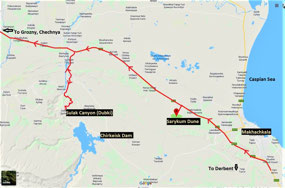
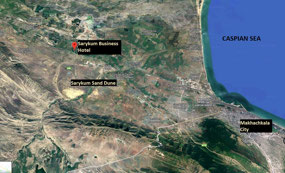
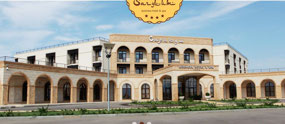

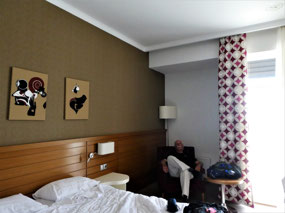
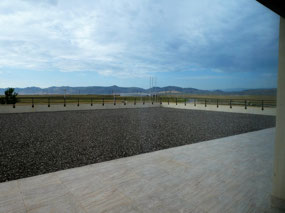
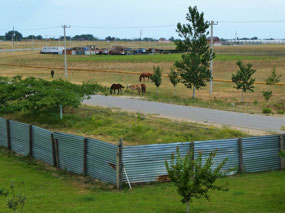
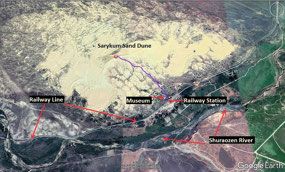
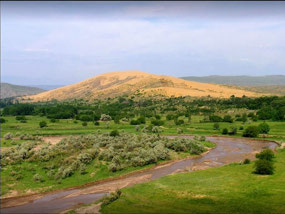


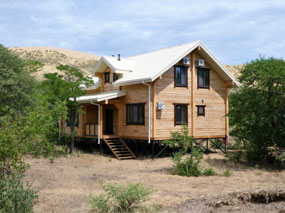
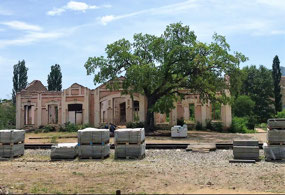
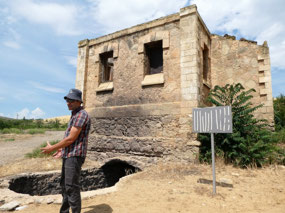

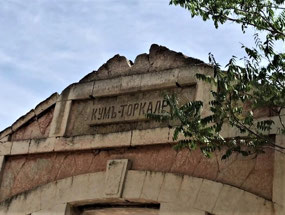
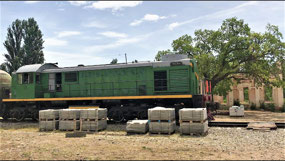
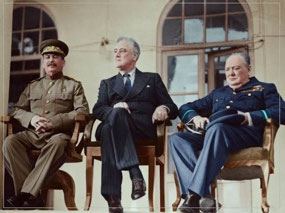
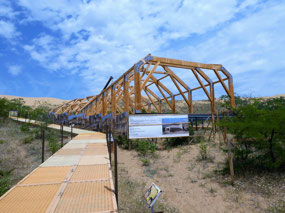
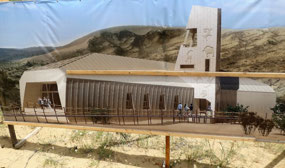

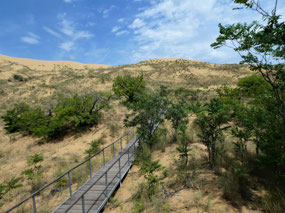
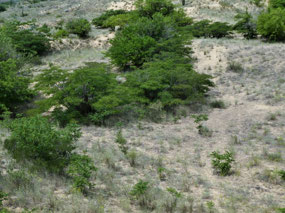
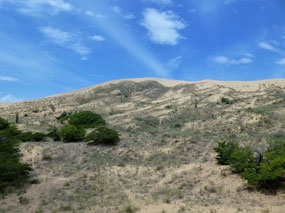
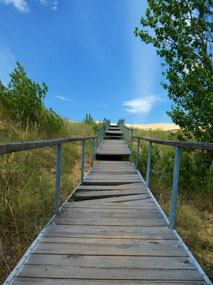
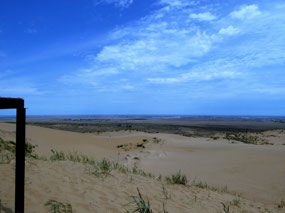
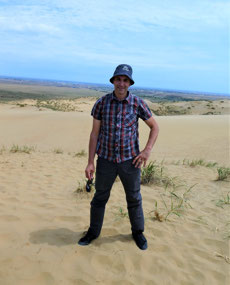
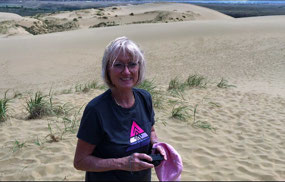
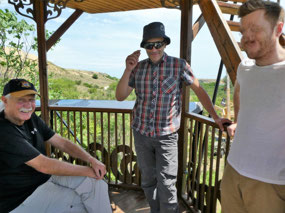

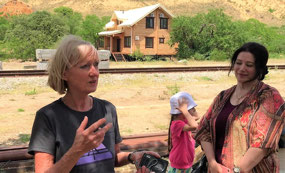
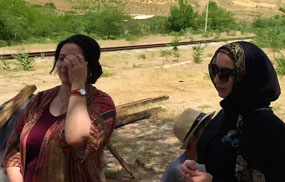
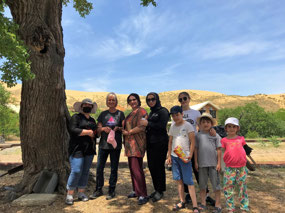
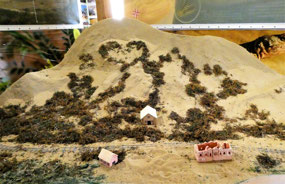
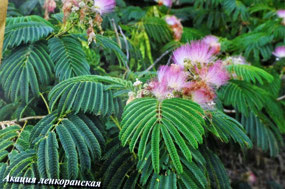
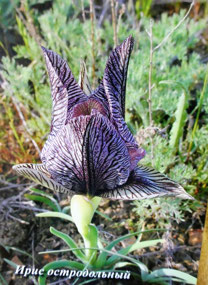
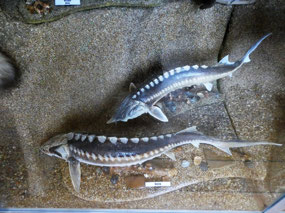
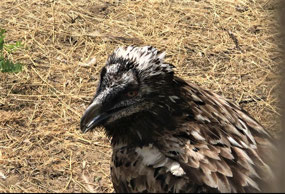
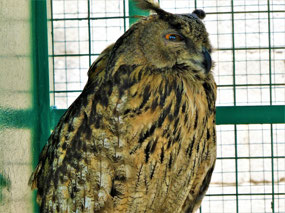
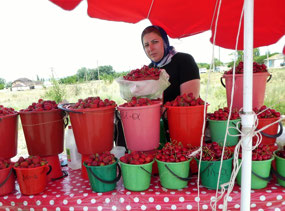

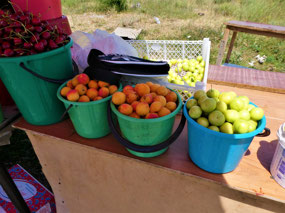
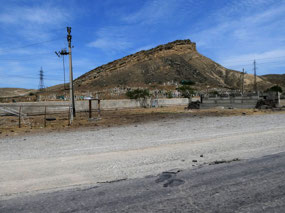
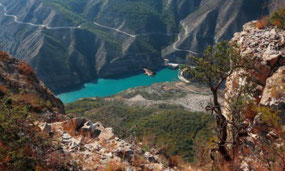
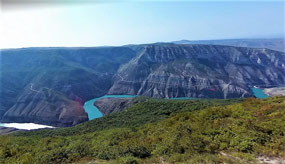
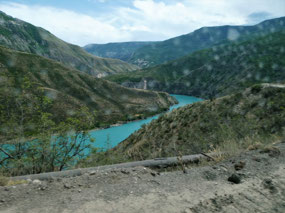
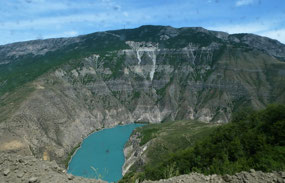
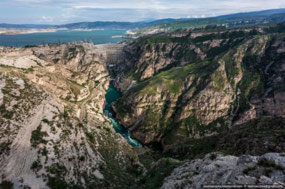

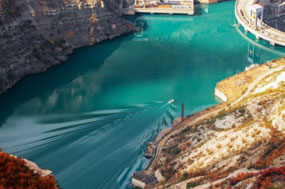
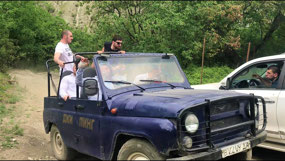
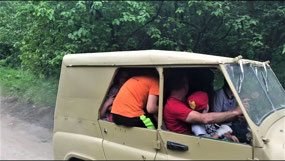
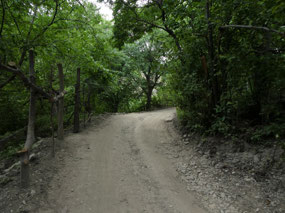
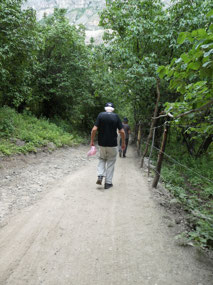
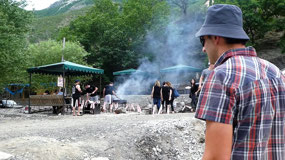


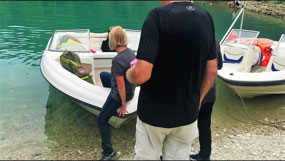

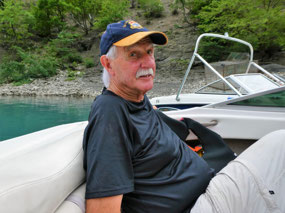
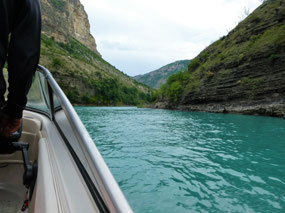

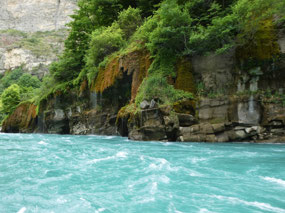
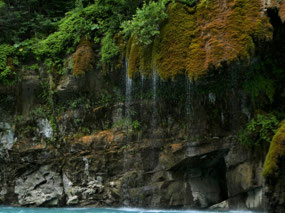
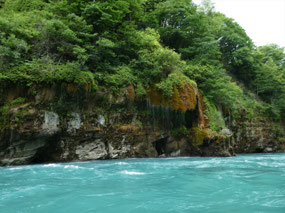
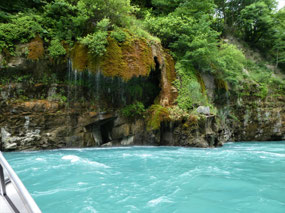
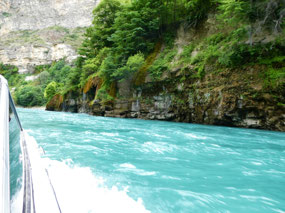
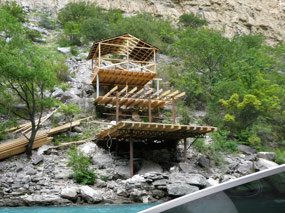
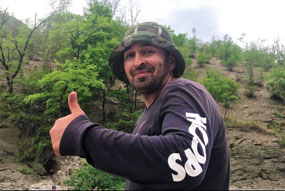
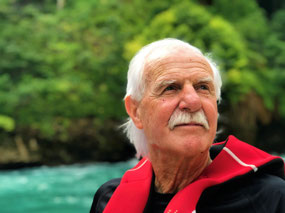
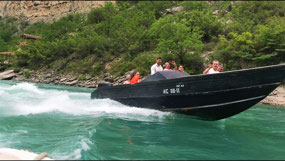
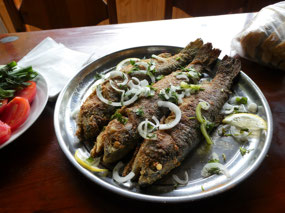
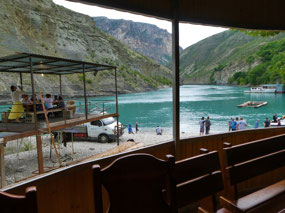
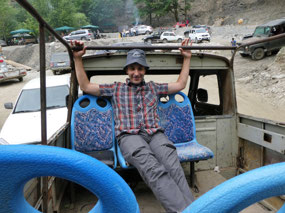

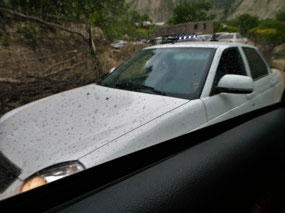
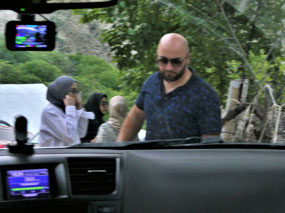
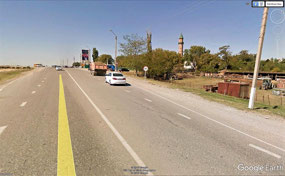



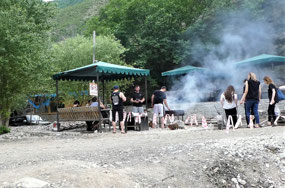
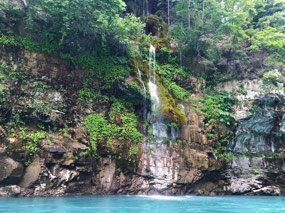
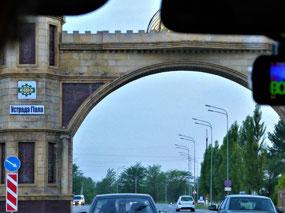
2025-05-22